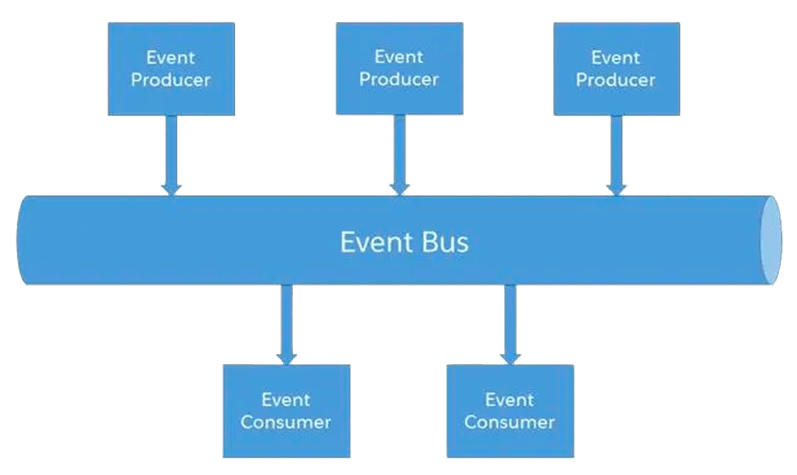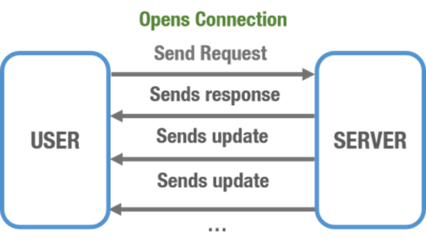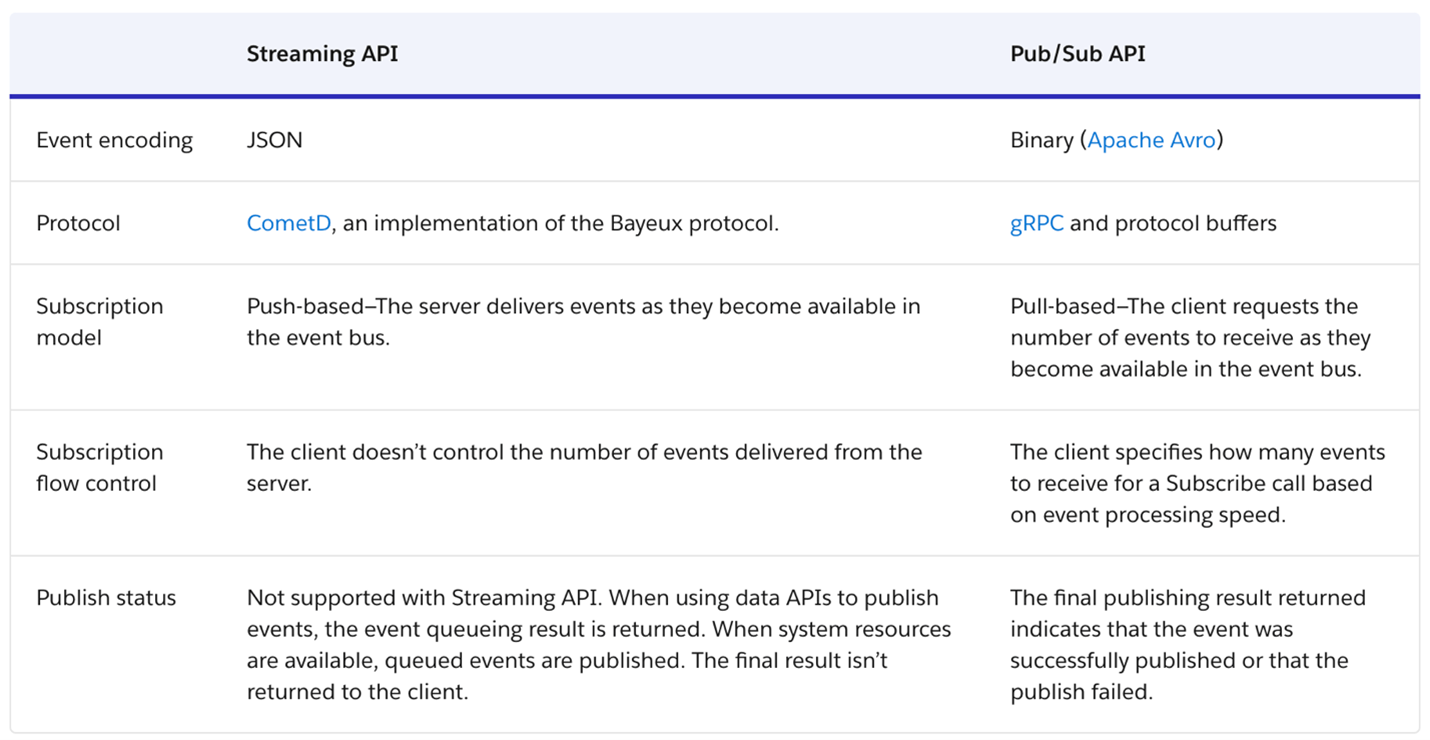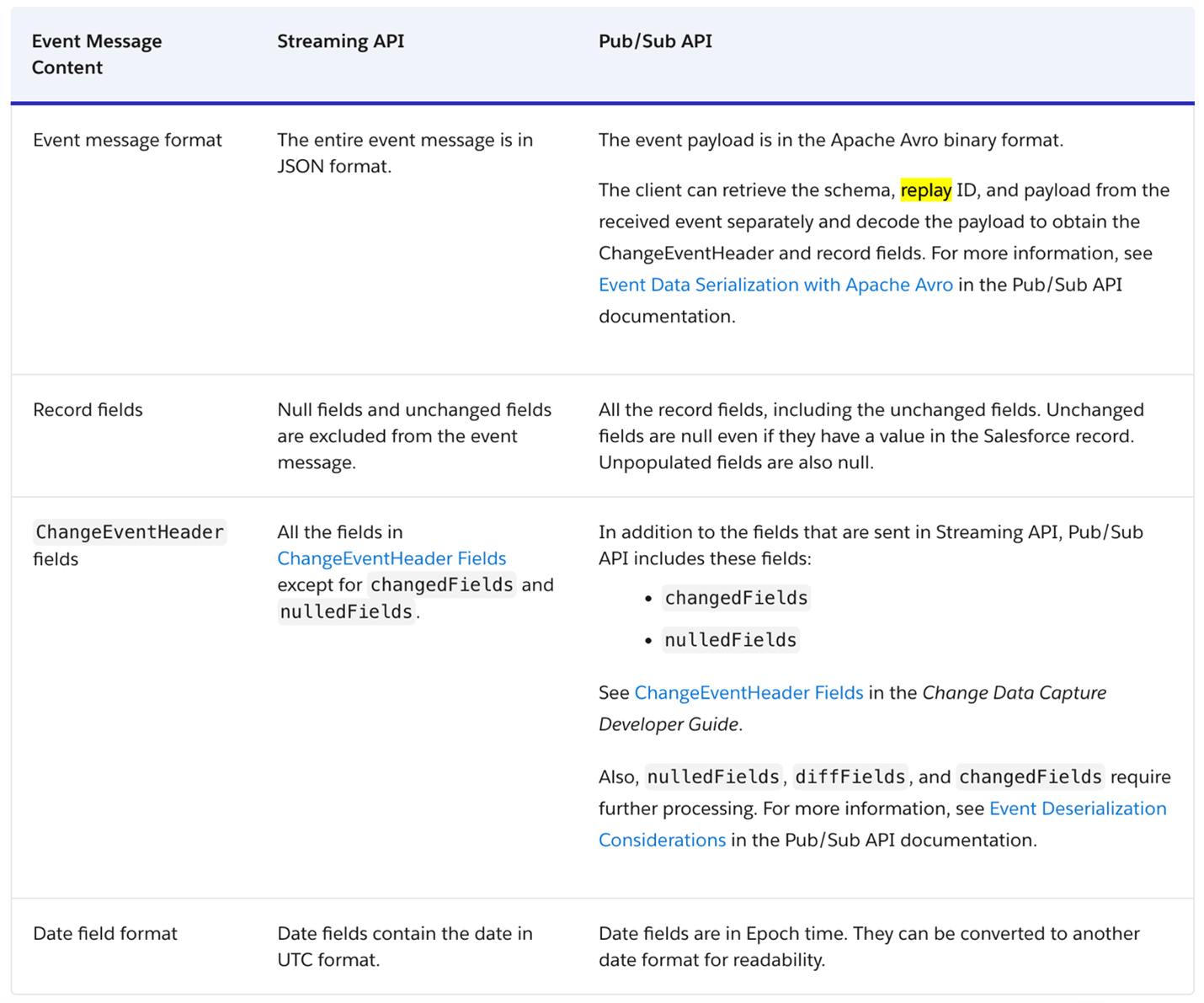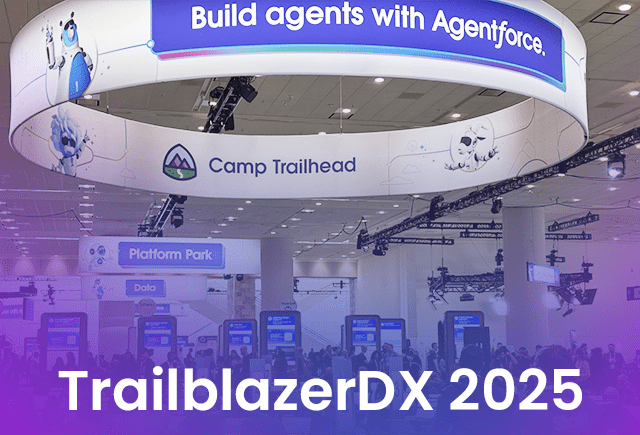Resources:
- https://developer.salesforce.com/docs/atlas.en-us.platform_events.meta/platform_events/platform_events_intro_emp.htm
- https://developer.salesforce.com/docs/atlas.en-us.platform_events.meta/platform_events/platform_event_limits.htm
- https://developer.salesforce.com/docs/atlas.en-us.platform_events.meta/platform_events/platform_events_limits_monitor.htm
- https://developer.salesforce.com/docs/atlas.en-us.platform_events.meta/platform_events/platform_events_limits_svpe.htm
- https://medium.com/salesforce-architects/the-new-salesforce-event-bus-f82165cb0585
- https://www.salesforceben.com/salesforce-platform-events/
- https://architect.salesforce.com/diagrams/design-patterns/publish-subscribe
- https://trailhead.salesforce.com/content/learn/modules/realtime-event-monitoring/get-to-know-realtime-events-and-transaction-security
- https://dzone.com/articles/salesforce-event-driven-architecture-using-platfor#:~:text=Publish
- https://developer.salesforce.com/docs/atlas.en-us.platform_events.meta/platform_events/platform_events_intro_other_events.htm
- https://architect.salesforce.com/decision-guides/event-driven#When_Should_You_Not_Use_Event_Driven_Architectures_
- https://developer.salesforce.com/docs/atlas.en-us.api_streaming.meta/api_streaming/pubsub_api_streaming_api_comparison.htm
- https://developer.salesforce.com/docs/atlas.en-us.api_streaming.meta/api_streaming/cdc_event_diff_pubsub_cometd.htm
- https://developer.salesforce.com/docs/atlas.en-us.api_rest.meta/api_rest/using_resources_event_log_files.htm
- https://help.salesforce.com/s/articleView?id=sf.real_time_event_monitoring_streaming.htm&type=5
- https://trailhead.salesforce.com/content/learn/modules/platform_events_basics/platform_events_architecture
- https://trailhead.salesforce.com/content/learn/superbadges/superbadge-events-sbu
- https://www.absyz.com/introduction-to-streaming-api/
Texas Dreamin’ 2024 Special Thanks to:
Platform Events Revisited:
- Rick Locke – Senior Technical Architect, Komodo Health
- Jeremy Hayes – Senior Technical Architect, Komodo Health
Demystifying Pub/Sub API:
- Federico Henderson – Salesforce Tech Lead, Altimetrik
- Gabriel Juarez – Salesforce Tech Lead, Nearsure
Platform Events vs. Mixed DML, How Admins Can Win the Day:
- Michelle Hansen – Principal, Slalom
![]() When dealing with Event-Driven Architectures, understanding the differences between Pub/Sub APIs and Streaming APIs is crucial when selecting the right approach for your event processing needs. Both paradigms facilitate the handling and distribution of events, but they differ in terms of how they operate, their use cases, and their implementations.
When dealing with Event-Driven Architectures, understanding the differences between Pub/Sub APIs and Streaming APIs is crucial when selecting the right approach for your event processing needs. Both paradigms facilitate the handling and distribution of events, but they differ in terms of how they operate, their use cases, and their implementations.

